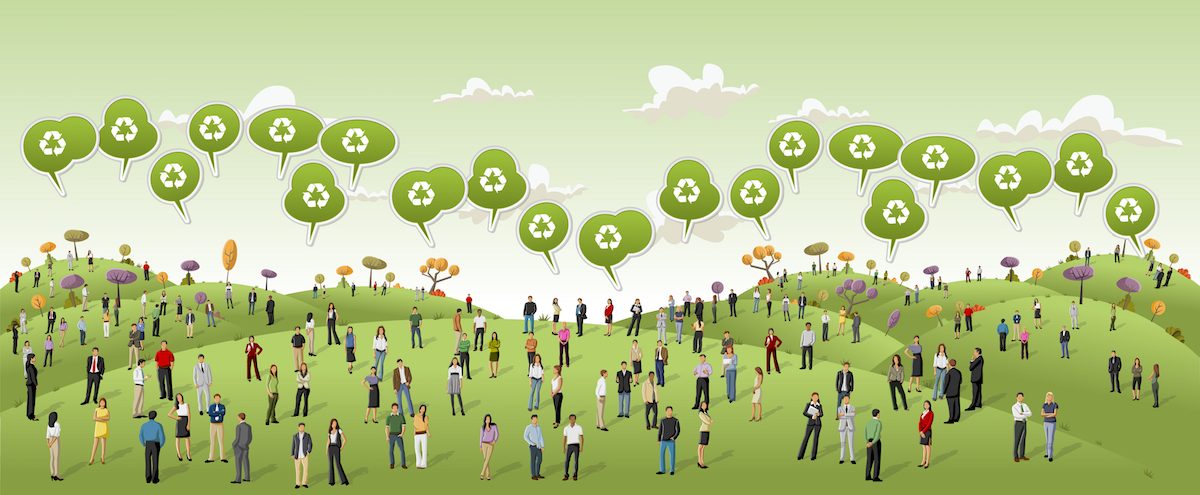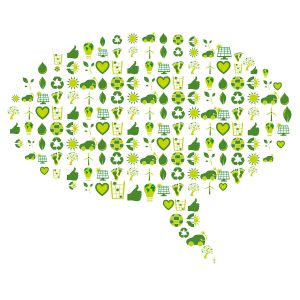
10 “Green” Industry Terms Everyone Should Know
Every field of work or area of philosophy has its own language, its own “jargon,” and uses specific terms that have specific meanings within that arena. Since education about environmental sustainability is crucial for all of us, it is also very important that we foster an understanding of the major terms that surround planet conservation.
1. footprint
The “footprint” of any activity or entity measures the effect being made on the environment. Simply put, it refers to the mark something or someone leaves on the Earth’s ecosystem. It is often used to discuss a “carbon footprint,” i.e. the amount of carbon dioxide emissions being generated and released by a process. Being able to quantify one’s footprint is very valuable for then trying to balance out any negative effects to the planet.
2. lifecycle assessment
Each product has a “lifespan” or “lifecycle,” starting from when the raw materials were collected to its processing, manufacturing, distribution, shipping, use, repair, and eventual disposal—or recycling. A life-cycle assessment (LCA) looks at the total “life” of a product and its impacts on the environment from beginning to end. This gives a much bigger perspective on the sustainability or ecological footprint of a product.
3. carbon neutral
Another name for this is to have a “net zero carbon footprint.” Essentially it means that all carbon emissions have been balanced out by some kind of offset, such as planting trees which absorb carbon dioxide from the air or by purchasing a certain number of carbon credits. It is usually used in the context of carbon dioxide release from vehicles, energy production, or other industrial processes.
4. sustainable
This is a term with an extremely wide usage. It is generally used to refer to anything that is related to conservation or preserving the Earth’s natural resources. More specifically the term “sustainable” actually means to balance the rate at which anything is being depleted with the rate at which that same substance or property is being replenished. So, those seeking a sustainable Earth are trying to ensure that resources are replenished just as much as they are used up. Since resources are not being exhausted, such a system can be sustained indefinitely.
5. renewable
Renewable resources in the context of earth friendly initiatives are those which can be naturally replenished, at least in a reasonable timeframe for humans. It often refers to energy sources such as wind, sun, water, or geothermal. Renewable energy provides power in four main areas: electricity, air and water heating/cooling, transportation, and off-the-grid energy services.

6. recyclable
Instead of using materials once and disposing of them, recycling is the process of taking waste materials and re-processing them into new products. This cuts down on resource use by giving products and materials a longer “life-span.” It is especially predominant with plastic and paper materials.
7. upcycling
Closely related to recycling, upcycling is what we call it when someone reuses waste materials and/or discarded objects to create something new. It could be something completely different, or it could be simply taking a piece of furniture and updating it with repairs, paint, or other creative spin. Part recycling and part art, upcycling challenges the imagination in the spirit of conservation.
8. regenerative design
Regenerative design is centered around the theory of creating a system that “regenerates” or restores its own sources of energy and materials. It is based on the self-sustaining ecosystems that occur in nature, with the goal being a “closed loop input—output” model, wherein the output is greater than or equal to the input. Regenerative design is used with regards to urban environments, buildings, economies, industries, and basically anything to do with creating a human ecosystem that integrates seamlessly with the rest of the Earth.
9. net positive
Net positive, a concept developed by Forum for the Future, is a business model that puts more into the environment than it takes out. In order to accomplish this, every emission created and resource used is accounted for and directly compensated for in kind. For example, if trees are used as a raw material, even more trees must be planted in order to not only replace the trees used but result in a “net positive” number of trees. The idea is that business as usual in such an organization results in a “plus” amount of natural resources rather than a “minus” at the end of the day.
10. circular economy
A circular economy is one which attains a sustainable future by operating in symbiosis with the environment and resources. The use of resources is optimized for maximum efficiency, and materials and products are returned to the system at the end of their “lifespan” to be used in another way. The goal is to create a sustainable supply chain, with manufacturing processes so carefully aligned that the output or waste of one cycle feeds the next cycle in a circular pattern.



